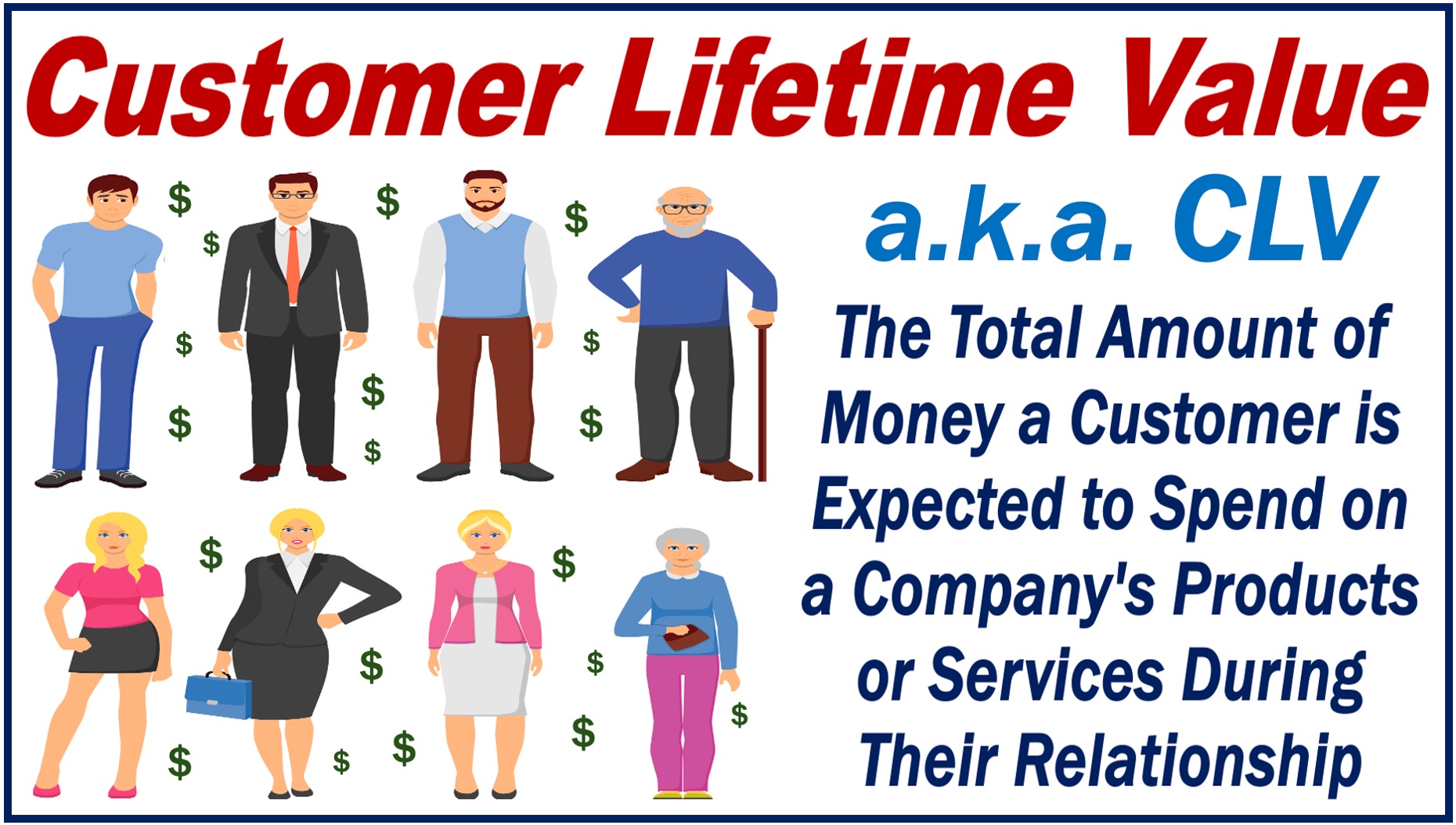Customer Lifetime Value or CLV refers to how much a customer spends on your company’s products and services during their commercial lifetime. In this context, commercial lifetime means the period during which they are customers of the company.
This metric is closely related to customer retention, that is, how long customers remain loyal before they move onto other suppliers or choose to discontinue their relationship with the company. Companies with long customer retention tend to have greater CLVs than their counterparts with short customer retention.
Shopify.com has the following definition of the term:
“Customer lifetime value (CLV) is a metric that represents the total net profit a company can expect to generate from a customer throughout their entire relationship. It takes into account the customer’s initial purchase, repeat purchases, and the average duration of their relationship with the company.”
Let’s say, for example, that your company sells skincare and beauty products. Your average customer, who starts buying your goods at 25 years of age, spends $180 per year. They tend to buy regularly until they are about sixty years old – they buy from you for 35 years. This means that your company’s average Customer Lifetime Value is $180 x 35 = $6,300. (There is another a more detailed example further down the page)
Benefits of CLV
Knowing your average customer lifetime value is good for business. Here are three benefits:
-
Resource Allocation
How do you decide how much to spend on getting new customers versus keeping current ones happy?
You will find it much easier to make this decision if you know how much the average customer is going to bring in during their commercial lifetime with your company.
-
Customer Focus
CLV shifts the spotlight from single transactions to building long-lasting relationships with customers.
Your goals and objectives change from quick sales to providing great experiences that keep customers coming back for more. In other words, CLV makes you focus more on cultivating customer loyalty.
-
Smarter Decisions
With CLV insights, you can pinpoint where your customers might abandon you and what parts of the customer journey or experience need improvement.

Calculating Averagte Customer Lifetime Value
The basic formula is:
Customer Value Per Year x Average Customer Lifespan = CLV
Let’s break this down with a fictitious example.
-
Average Customer Value Per Year
Let’s imagine you own a coffee shop. Your average customer comes in twice a week and spends $5 each time.
To find the customer value per year, you would calculate it like this:
$5 × 2 visits per week × 52 weeks per year = $520
-
Average Customer Lifespan
Suppose, on average, customers keep coming to your coffee shop for about 5 years. The average customer lifespan, therefore, is 5 years.
-
Calculating CLV
To find the Customer Lifetime Value, you multiply the Customer Value Per Year by the Average Customer Lifespan:
$520 (Customer Value Per Year) × 5 years (Average Customer Lifespan) = $2, 600
The CLV for your average customer at your coffee shop is $2,600.
The Power of CLV
Customer lifetime value isn’t just a fancy number; it tells a powerful story:
-
Loyal Customers are Gold
Did you know that keeping your existing customers is significantly cheaper than trying to get new ones?
In a Harvard Business Review article titled “The Value of Keeping the Right Customer,” published on October 29, 2014, Amy Gallo, a Contributing Editor, wrote:
“Acquiring a new customer is anywhere from five to 25 times more expensive than retaining an existing one.”
-
Quality Counts
High CLV means you’re doing something right! It shows that customers like your products or services and find true value in what you offer.
Boosting Your Customer Lifetime Value
The following tips should help improve your average CLV:
-
Customer Service
Consumers today expect top quality customer service and support. If you can make your customers and prospects feel respected, valued, understood, and appreciated, they will more likely become repeat customers.
There are some amazing ‘smart’ customer service software packages that can talk, behave, and think like a human being. If a device, machine, or piece of tech is ‘smart,’ it means that it uses artificial intelligence and machine learning.
There is no excuse today not to have customer service available round the clock, seven days a week, thanks to modern technology and automation solutions.
-
Loyalty Programs
Reward customers for choosing you again and again. If they are well prepared and thought out, these programs work wonders!
-
Personalized Experiences
Tailor offers and communications to match individual customers’ needs, concerns, and goals.
Customer Feedback and Continuous Improvement
Do not underestimate the value and importance of customer feedback. It can help you decide how to improve your products or services or introduce new ones.
Apart from enhancing product quality, asking for comments and feedback fosters a sense of community and involvement among your customers. It encourages them to stay loyal and boosts their lifetime value to your business.
Final Thoughts
Customer Lifetime Value is an extremely useful tool if you are looking to understand your customers better, plan smarter, and grow in a sustainable way.
If the world’s most successful companies take CLV seriously, don’t you think you should, too?
